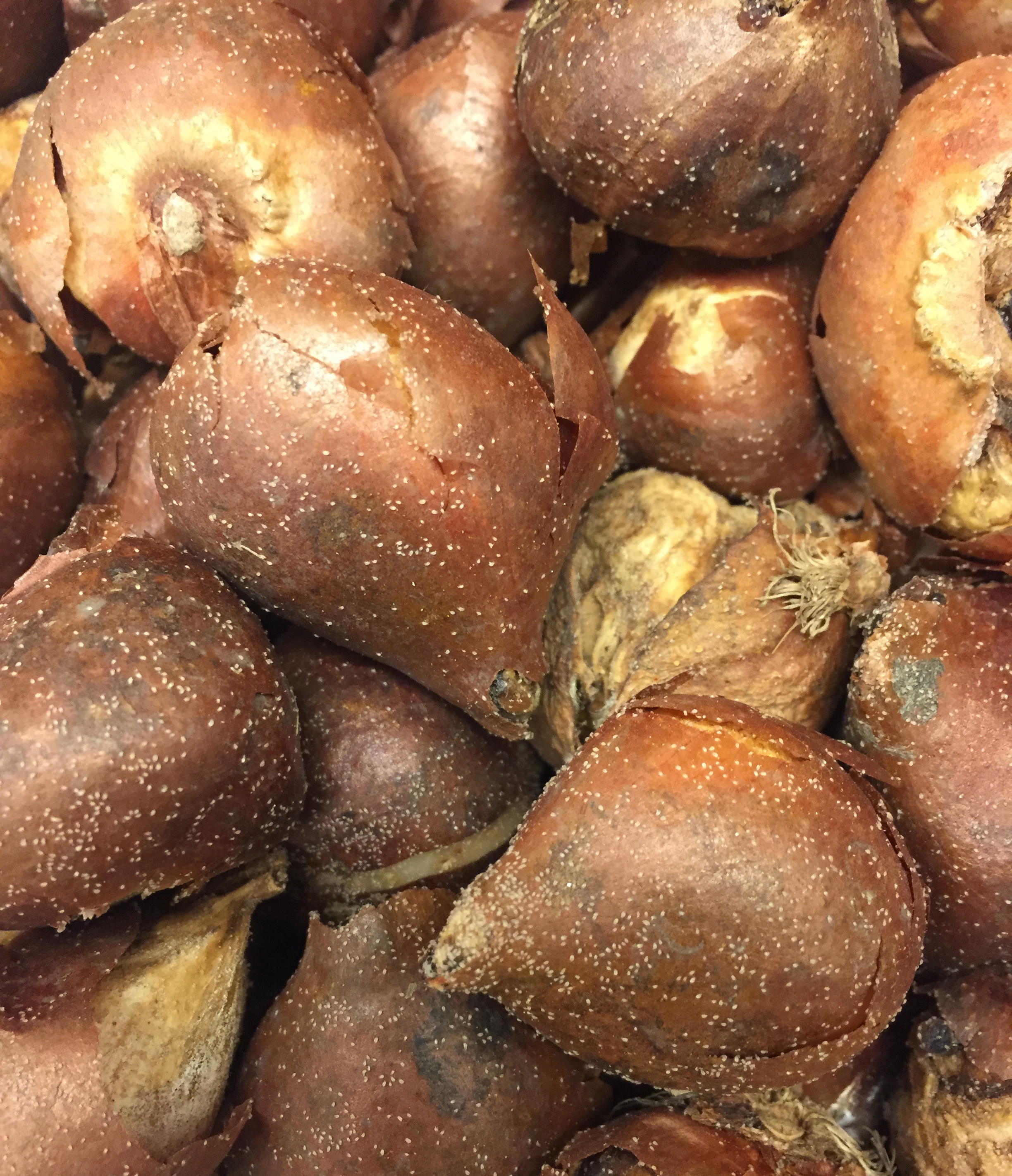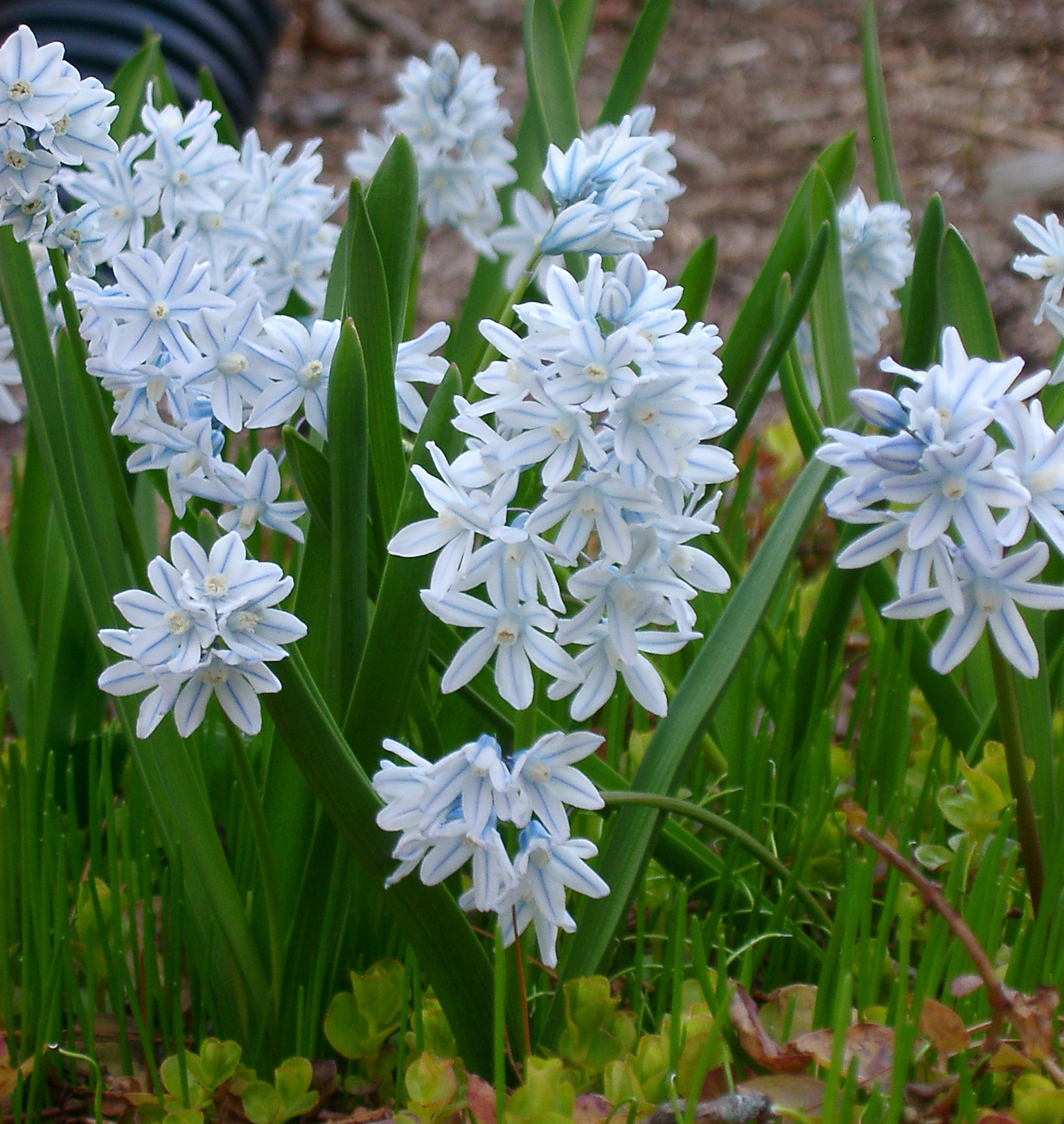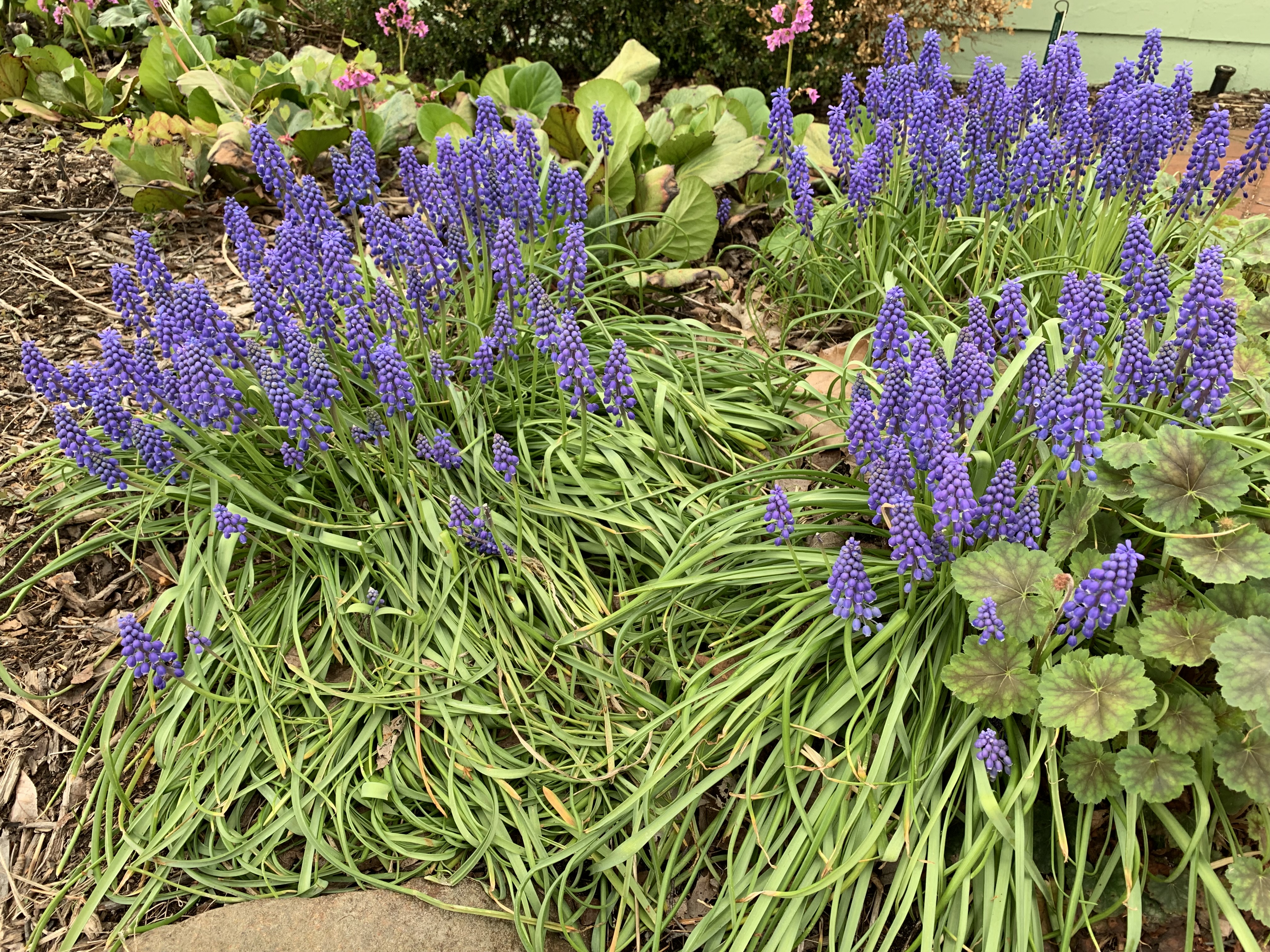Where are my bulbs? Why aren’t they flowering?
Tips and tricks to ensure your spring bulbs come back year after year.

In spring, we see the return of some of our favorite creatures like robins digging for worms or sandhill cranes flying overhead. Many gardeners are also in search of another harbinger of spring as they wander in determination and ask, “Where are my bulbs, and why aren’t they flowering?”
The answer to this question can be different for every gardener and for every bulb. Some reasons why bulbs don’t come back year after year are within your control as a gardener, while others are not. Often in the case of spring bulbs like tulips or hyacinth, we are trying to grow them in a landscape that is far different from their native habitat. This gives rise to many of the reasons why hardy bulbs may struggle to become permanent residents in the garden. Let’s explore a few of these reasons and how gardeners can mimic conditions that can often lead to more a successful return of blooms year after year.
Bulb quality
There are factors that affect if a bloom will return even before bulbs are in the ground. Bulb quality is one of the first things to check before planting as unhealthy bulbs often do not grow. If they do, the plant will often be stunted. Various fungi and bacteria can infect bulbs and cause root rot, bulb rot and mold. Insect pests may also affect bulbs including various maggots or bulb mites.
Be observant and look for any sort of off color, texture or shape before putting bulbs into the ground. Don’t be afraid to give your bulbs a squeeze! An unhealthy bulb will often be dried out, soft to the touch or moldy looking. Avoid planting bulbs with these symptoms. A healthy bulb will be firm to the touch and have a weight appropriate for its size. Larger bulbs also tend to produce healthier plants. To prevent the spread of pests and soil-borne pathogens that may affect bulbs, it is also important to use regularly cleaned gardening tools.

Site selection
If you have already planted your bulbs and are wondering why they didn’t emerge this year, the answer could be site related. As mentioned previously, many of our spring bulbs are native to a very different climate. Take for instance tulips, which are native to the mountain ranges of Central Asia and were naturalized westward to places like Afghanistan and Turkey as well as to the north and northeast. Many of our original species tulips are adapted to these arid regions with gravelly soil or rocky slopes. The hybrid tulips of today are the product of years of breeding and are somewhat more suited to cooler and rainier climates, and with proper site selection, could do well in your home garden.
When you are thinking about your site, ask these questions:
What is the soil structure and fertility like? This is where a soil test can help because it will tell you the proportions of clay, sand and organic matter in the soil. Get started on your soil test from Michigan State University Extension.
Bulbs have a variety of preferences, so do your research and see if the species you have planted do best in a sandy mix, rich loamy or other soil type. A soil with poor drainage is the enemy of most bulbs. This often leads to rotten bulbs that cannot grow. Adding organic matter either as compost, manure or finely chopped plant matter can help improve soil structure. If you have very poor drainage, often finding another place for your bulbs is the best course of action.
Is it an open space? Will bulbs be exposed to the elements? Often, the soil plays a role in buffering the bulbs from temperature extremes. However, this is not always the case and depends on soil type. Planting bulbs in a depression where cold air settles or where they are exposed to harsh winds may affect growth. Planting near structures may also affect growth as they can block wind, radiate heat and warm the soil. This can speed up bulb growth in the spring, which can be good or bad depending on late frosts.
What is the light like? Full sun, part sun or full shade? Many spring bulbs do best in full sun. The sunlight’s warmth plays an important role in triggering growth, as well as providing energy to the leaves so they can manufacture enough food to prepare for next years’ growth cycle.
Having a proper site for your bulbs is one of the most critical steps in ensuring they will come back. All bulbs are different, so remember to look up the recommendations for the specific bulb you are planting. If you realize your bulbs are in a less than ideal site, you can take a risk and dig them up and relocate in the fall. Some bulbs may be unsalvageable due to rotting or because they do not respond well to disturbance.
Planting time
Proper planting time is all dependent on a soil temperature, which controls the bulb growth cycle. For most spring bulbs, fall is the most ideal time to plant. This is when we get the cooling soil temperatures that signal root growth. Bulbs that are planted in the fall will establish roots at the base (basal plate) and help it get off to a good start next spring.
During this time in the fall’s cooling soil, changes are also occurring in the bulb that will prepare the shoot for proper growth and flower development once temperatures rise again. In the spring when temperatures start to rise, plant growth increases and leads to flowering. Resources from the photosynthesizing leaves are delivered to a newly formed bulb in preparation for next year’s cycle. The new cycle will begin at the end of summer with organ formation in the bulb.
In general, planting when soil temperatures are too warm (above 60 degrees Fahrenheit) can lead to disease and rot. Planting when soil temperatures are too cold (below 40 F) can lead to improper root and shoot development. Can’t take the temperature of your soil? A good indicator of when to plant is when nighttime temperatures are consistently between 40 F and 50 F.
Climate extremes
It is always helpful to reflect on any unusual or extreme changes in climate patterns. As mentioned previously, the bulb growth cycle is largely dependent on temperature. Warm temperatures in summer are needed for organ formation, including the flower meristem. Cooler temperatures in fall and winter signal root growth and shoot elongation. The return of warm temperatures in the spring influences plant growth and flowering. Any interruptions or extreme changes in length can disrupt this cycle.
Ask yourself:
Was it unusually hot or cold this year? Unusually warm or early springs cause faster plant growth but result in smaller flowers and a shorter duration of vegetation, which can ultimately lead to less vigorous bulbs next year. An unusually cool summer can suppress flower bud development and even cause the formation of vegetative buds instead of floral buds. A late frost in spring can also affect the above ground vegetation and stunt next year’s growth. An unusually cold winter can increase the risk of bulb mortality.
Was it unusually wet or dry this year? A drought year can lead to insufficient water supply in the bulb and can affect flower bud survival, especially through an unusually warm autumn or winter. An unusually wet year can cause bulbs to rot in the soil.
Planting depth
The depth at which you plant a bulb plays a large part in how the bulb will be buffered from climate extremes and distance the plant will have to grow to reach the surface. The proper depth is based on the size of the bulb. In general, plant the bulb three to four times as deep as the bulb height. If you have a tulip bulb that is about 2 inches tall, plant it so the base of the bulb is 6 inches below the surface of the soil.
When thinking about planting depth, ask:
Were the bulbs planted too deep? We must remember that the plant is running off the nutrients built up in the bulb. These stored resources will either be enough to get the plant to the soil surface and beyond, or not. This may be the case for smaller bulbs that are planted too deep. Sometimes you do not see the effect of planting too deep until a few years down the road because the original bulb has enough resources to grow, while those produced the following years do not. They become weaker and weaker due to insufficient nutrient build up.
Were the bulbs planted too shallow? If a bulb is planted too shallow, it is more likely to be exposed to the above-ground temperatures and disruptions in the growth cycle. In the case of daffodils, being planted too shallow leads to the development of non-flowering new bulbs. Being too close to the soil surface could also be fatal in the case of unusually cold winters.
Below is a list of common spring bulbs and recommended planting depths based on the usual, purchasable sizes. As mentioned above, planting depth depends on actual bulb size. Keep that in mind when planting if you end up with some unusually large or small bulbs in the mix.
3- to 4-inch planting depth
- Glory of the snow
- Crocus
- Snowdrops
- Grape hyacinth
- Puschkinia
- Squill
5- to 8-inch planting depth
- Daffodil
- Fritillaria
- Hyacinth
- Tulip
Animal browsing and disturbance
Another possible cause for the lack of bulbs in spring is animal damage. There are two primary ways animals can negatively affect bulbs:
- Digging or tunneling. Some small rodents such as squirrels, chipmunks and mice are known to dig up bulbs to eat or save in their winter stash. Tunneling rodents can eat bulbs themselves, like voles; create tunnel access to bulbs by other animals; or compromise bulbs that have roots sensitive to soil disturbance.
- Eating greenery during the previous spring. Because a bulb needs to divert energy from its foliage back into the bulb when its flowering is complete (to prepare for next spring), an animal that eats most of the foliage from a bulb before that energy transition occurs can weaken or destroy it. Deer and rabbits are the most likely to do this, and deer can even pull plants completely out of the soil, bulb and all.
It is important to remember that not all wildlife eats or disturbs flower bulbs, and not all flower bulbs are susceptible to animal damage. If you are suspicious of wildlife damage, check the diet of the suspected animal first. Animals that are primarily carnivorous—meat/insect eaters—will likely not eat bulbs, while herbivores—plant-eating—will. For example, herbivorous voles feed on plant roots, seeds and bulbs, while carnivorous moles mainly eat worms and insects. Gardeners with a recurring mole problem may quickly blame the moles for a lack of spring bulbs when another animal is to blame, although mole tunnels can provide access to bulbs by other animals.
Where animal damage is a regular occurrence, focus on bulbs that animals avoid. All parts of a daffodil are poisonous to animals, and animals do not like the strong scents produced by allium bulbs and their foliage. Some bulbs, such as squill or Puschkinia, are sensitive to soil disturbance created by tunneling animals. In contrast, other less sensitive bulbs, especially ones in heavy and clay soils, may benefit from soil aeration created by a tunneling mole.

Practices to help bulbs and blooms return
Mulching
Mulching is a common practice that can help regulate soil moisture and temperature, but too much can affect bulb growth and too little can make plants more susceptible to harsh temperatures and pests. Around 2 inches is the recommended amount for more common bulbs like tulips, which will also provide excellent cover to rodents like voles. Take care not to over mulch, especially for minor bulbs, and keep total depth of the bulb in mind.
Leave the leaves
One of the other factors that affects a bulb’s carbohydrate reserves is how long leaves are left. In late spring and early summer, after blooms have faded, the leaves are busy photosynthesizing. The resources created during this time are what will fuel the bulb through the next growing season. Leave the leaves until they have yellowed and withered. If you have minor bulbs naturalizing in your yard, take care not to mow the leaves before they have yellowed.
Deadheading is another action you can take to help your bulbs build up resources. This will prevent the seedpod from forming and can redirect resources into the bulb instead of using them to produce seed.

Dividing bulbs
Sometimes bulbs can become overcrowded and this may cause them to flower less. Every few years or when you suspect this is happening, dig up and divide your clumps and replant them. This can be done in late summer or fall, after the foliage has died back.
Choosing bulbs that establish better than others
Some bulbs are more likely to come back year after year than others. Narcissi, crocus, muscari and scilla naturalize much more easily and take more neglect than bulbs such as tulips. Even within some groups (e.g., tulips), there are varieties that are more likely to survive more years than others. Species tulips, Darwin hybrid tulips and Fosteriana tulips survive many more years than other varieties. When shopping, look for bulb varieties that are labelled self-naturalizing or perennial-like over others.
With this new stockpile of knowledge, get out there and take some action to bring your bulbs back to life. Here’s to hoping that next spring those wandering gardeners will be sitting outside, surrounded by flowering bulbs and contently whistling along with the robins.



 Print
Print Email
Email